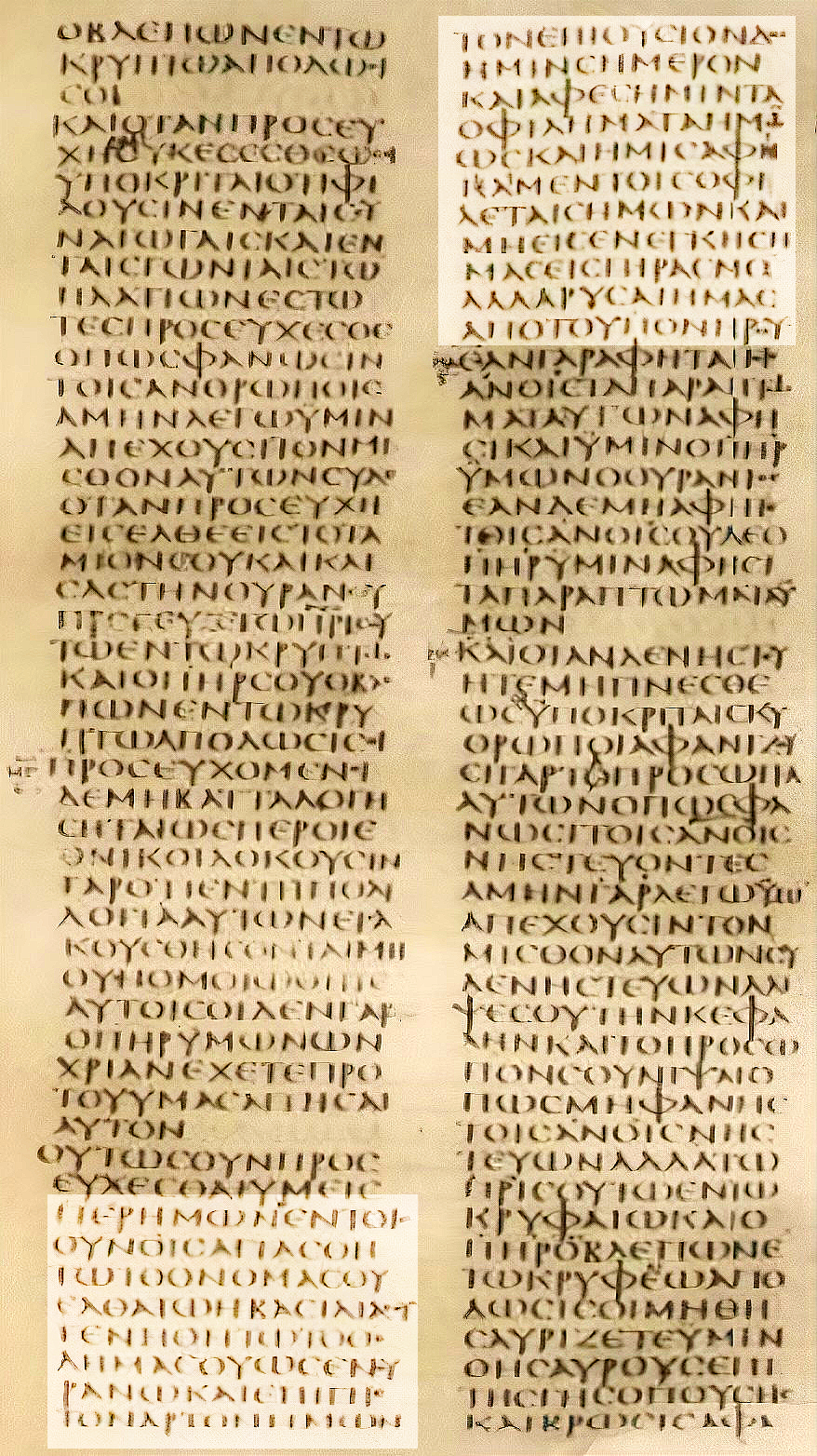
Welcome to Introduction to Sacred Scripture
COURSE DESCRIPTION
“Ignorance of the Scriptures is ignorance of Christ.” St Jerome
The Second Vatican Council described the study of Sacred Scripture as the ‘soul’ of all theology (DV, 24). This course is a general introduction to the study of Sacred Scripture, covering fundamental principles regarding the Word of God set down in writing; a general overview of the Bible; methods for studying and interpreting Scripture; the place of Sacred Scripture in Divine Revelation and in the life of the Church; its sacred nature; the canonical books, and an introduction to biblical interpretation. Students should be equipped to read, study and meditate on Sacred Scripture, to nourish their spiritual life
LEARNING OBJECTIVES
By the end of this course students should be able to:
- Explain the relationship between Sacred Scripture, Tradition and the Magisterium
- Identify and explain the key ideas of the Constitution Dei Verbum
- Reflect on the theological significance of the analogy between the Word Incarnate and the inspiration of the Scriptures as realities at once both divine and human, in which the Divine Wisdom is expressed in human words despite their limitations.
- Reflect on the content and supernatural purpose of the Bible
- Explain what it means (and does not mean), to say that ‘everything asserted by the inspired authors or sacred writers must be held to be asserted by the Holy Spirit,’ without error, for the sake of salvation. (DV, 11).
- Be familiar with the meaning of the term ‘canonical’ in relation to the books of the Bible, the formation of the canon in the early Church, and its dogmatic definition by the Magisterium.
- Explain the difference between the Catholic and Hebrew Bible, between the Catholic and Protestant canons, and the reasons the Church holds particular books as canonical.
- Apply, using examples, the basic principles Catholics use for interpreting Sacred Scripture: the ‘senses’ of Scripture, textual, literary and historical criteria, literary genres, and criteria particular to biblical hermeneutics that interpret Sacred Scripture in accordance with divine inspiration (content and unity of Scripture, the living Tradition of the Church, and the analogy of faith. (CCC, 109-119).
PROGRAM
Introduction to Sacred Scripture will cover the following topics:
PART I
- INTRODUCTION
- The Sacred Scriptures
- Principal documents of the Magisterium on Sacred Scripture
- Overview of the history of the study of Sacred Scripture
- THE WRITTEN EXPRESSION OF THE WORD OF GOD
- Revelation and Sacred Scripture
- Sacred Scripture and the fullness of revelation in Christ
- THE NATURE OF SACRED SCRIPTURE
- The nature of Sacred Scripture
- The nature and explanations of inspiration
- Inspiration and charisms
- SCRIPTURE AS THE WAY, THE TRUTH AND THE LIFE
- Sacred Scripture as the path to God
- The truth of Sacred Scripture
- Sacred Scripture as a source of spiritual vitality
PART II
- THE CANON OF SACRED SCRIPTURE
- Transmission of the books of the Bible
- The ‘canon’ and related concepts
- Canon of the Old and New Testaments
- The Canon and the identity of the Church
- The transmitted text
- THE INTERPRETATION OF SACRED SCRIPTURE
- Hermeneutics: general and biblical
- Overview of the history of biblical hermeneutics
- The Catholic interpretation of Sacred Scripture
- The interpretative task of the Church
- Sacred Scripture in the life of the Church
The full program is available here | VIEW
RESOURCES
LIST OF BOOKS OF THE BIBLE (CCC, n. 120) | VIEW
CODEX SINAITICUS
Codex Sinaiticus, a manuscript of the Bible written in the middle of the fourth century, contains the earliest complete copy of the Christian New Testament. The hand-written text is in Greek. The New Testament appears in the original vernacular language (koine) and the Old Testament in the version, known as the Septuagint, that was adopted by early Greek-speaking Christians. In the Codex, the text of both the Septuagint and the New Testament has been heavily annotated by a series of early correctors. Codex Sinaiticus is one of the most important books in the world. Its heavily corrected text is of outstanding importance for the history of the Bible and the manuscript – the oldest substantial book to survive Antiquity – is of supreme importance for the history of the book. Find out more about the Codex Sinaiticus and view the manuscripts here. | VIEW

ASSESSMENT
To be advised
BIBLIOGRAPHY
Essential Reading
Faculty of Theology, University of Navarre, The Navarre Bible, (NY: Scepter).
Catechism of the Catholic Church, nn. 50-141. | VIEW
Farkasalvy, D., Inspiration & Interpretation: a Theological Introduction to Sacred Scripture, Washington D.C.: CUA Press), 2010.
Magisterial and Other Documents
Ecumenical Councils
Second Vatican Council, Dogmatic Constitution on Divine Revelation, Dei Verbum, 18.11.1965. | VIEW
First Vatican Council, Dogmatic Constitution, Dei Filius, 1870. | VIEW
Council of Trent, 4th Session, Decree Concerning Canonical Scriptures, Decree on the Editing & Use of Sacred Books, 1546. | VIEW
Council of Trent, 5th Session, Decree on Reformation, 1546. | VIEW
Council of Florence, Session 11 (sacred and canonical books), 1442. | VIEW
Popes
Francis, Apostolic Letter, Scripturae Sacrae Affectus, on the 1600th Anniversary of the Death of St Jerome, 2020. | VIEW
Benedict XVI, Apostolic Exhortation, Verbum Domini, 2010. | VIEW
John Paul II, Discourse to International Symposium of Scientists on the occasion of the 350° Anniversary of the Publication of Galileo’s “Dialogue on the Two Chief World Systems”, 9.5.1983. | VIEW
John Paul II, Apostolic Letter Patres Ecclesiae,1980.
John Paul II, Apostolic Letter Duodecimum Saeculum, 1987.
John Paul II, Encyclical Letter Fides et Ratio, 1998. | VIEW
Pius XII, Encyclical Letter, Divino afflante Spiritu, 1943. | VIEW
Benedict XV, Encyclical Letter, Spiritus Paraclitus, 1920. | VIEW
Leo XIII, Encyclical Letter, Providentissimus Deus, 1893. | VIEW
Pontifical Biblical Commission
Pontifical Biblical Commission, The Interpretation of the Bible in the Church, 23.4.1993. | VIEW
Pontifical Biblical Commission, The Inspiration and Truth of Sacred Scripture, 2014.
Pontifical Biblical Commission, What is Man? An Itinerary of Biblical Anthropology, 2019.
Pontifical Biblical Commission, The Jewish People and the Sacred Scriptures in the Christian Bible, 2001. | VIEW
Further Reading
Baker, K., Inside the Bible: A Guide to Understanding Each Book of the Bible, (Ignatius Press), 1988.
Fuentes, A., A Guide to the Bible, (Four Courts Press), 1987.
O’Callaghan, P., God and Mediation: Retrospective Appraisal of Luther the Reformer, (Fortress Press), 2017.
Williams, T. D., Textual Concordance of the Holy Scriptures, (TAN), 1985.
Basevi, C., ‘Sacred Scripture’, in Interdisciplinary Encyclopedia of Religion and Science, G. Tanzella-Nitti, I. Colage and A. Strumia (eds), 2008. | VIEW
Brown, R., Fitzmyer, J., and Murphy, R., (eds.), The New Jerome Biblical Commentary, (Englewood Cliffs NJ: Prentice Hall), 1990.
Freedman, D. N., Herion, G. A., The Anchor Bible Dictionary, (New York: Doubleday), 1992.